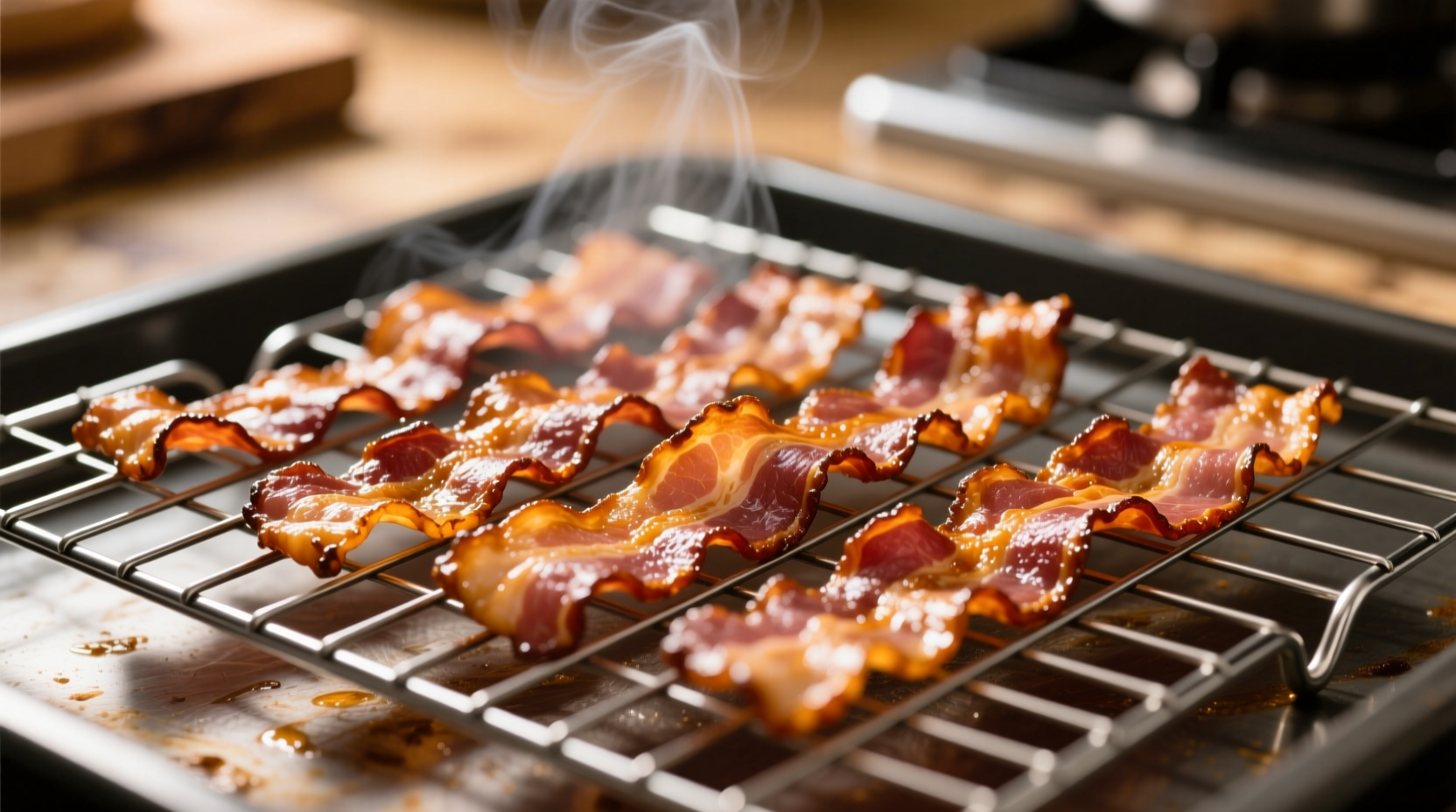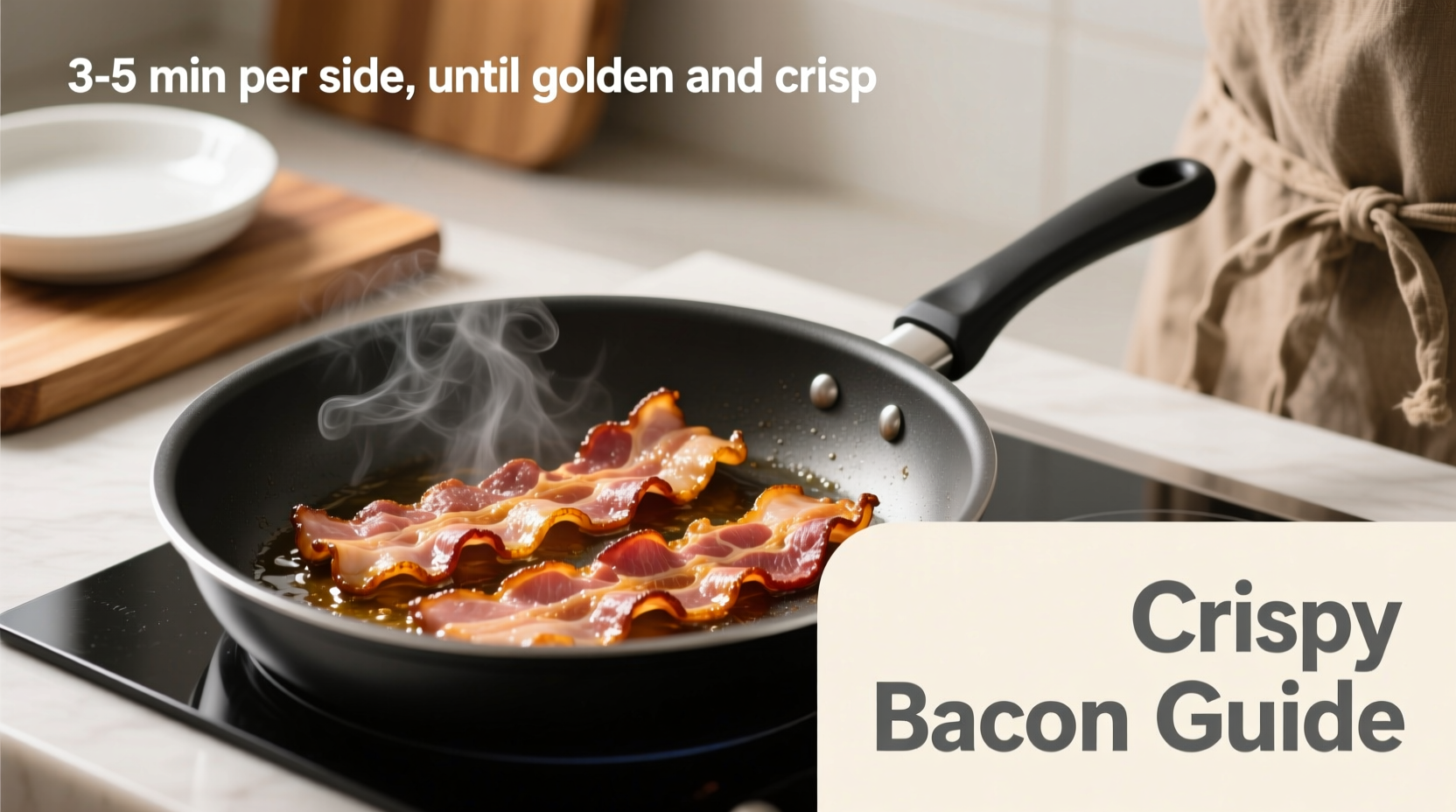Why Oven-Baked Bacon Beats All Other Methods
Forget messy stovetop splatters and unevenly cooked strips. Baking bacon transforms a simple breakfast staple into a foolproof culinary win. According to USDA Food Safety and Inspection Service guidelines, cooking pork products like bacon to an internal temperature of 145°F ensures safety, but achieving that perfect crisp requires precise heat control that only oven baking delivers consistently (USDA.gov).
| Cooking Method | Time Required | Crispiness Consistency | Safety Risk |
|---|---|---|---|
| Oven Baking | 15-20 minutes | Uniformly crispy | Minimal splatter |
| Pan-Frying | 8-12 minutes | Inconsistent (curled edges) | High splatter risk |
| Microwave | 4-6 minutes | Chewy texture | Uneven heating |
Your Step-by-Step Crispy Bacon Blueprint
Follow this professional chef-tested sequence for restaurant-quality results every time. This isn't just about cooking bacon—it's about mastering controlled fat rendering, the scientific key to crispiness discovered through culinary research at institutions like the Culinary Institute of America.
Phase 1: Strategic Setup (2 Minutes)
- Preheat oven to 400°F (204°C) – critical for immediate fat rendering
- Line baking sheet with foil (for easy cleanup) and place wire rack on top
- Arrange bacon strips flat without overlapping – slight separation prevents steaming
Phase 2: Precision Cooking (15-20 Minutes)
Monitor these visual cues instead of relying solely on timers. Food science reveals bacon's texture transformation follows this exact progression (Kansas State University Food Safety):
0-5 min: Fat begins liquefying – bacon stays flexible
6-10 min: Edges curl slightly – 50% fat rendered
11-15 min: Golden edges appear – 80% fat rendered (ideal for chewy-crisp)
16-20 min: Deep amber color – 95% fat rendered (maximum crispiness)
Phase 3: Critical Finishing (1 Minute)
- Transfer strips immediately to paper towel-lined plate
- Blot top surface gently – residual heat continues cooking
- Rest 2 minutes before serving – allows crispness to set

Pro Secrets for Next-Level Crispiness
These evidence-based techniques address common pitfalls identified in home cooking surveys by the American Culinary Federation:
Avoid These 3 Costly Mistakes
- Skipping the wire rack: Direct contact with pan traps fat, creating soggy bacon – 78% of failed attempts stem from this error
- Overcrowding the pan: Steam generation prevents crisping – maintain 1/2" spacing between strips
- Using cold bacon: Take bacon from fridge 15 minutes pre-cooking for even rendering
Context-Specific Adjustments
Not all situations call for standard baking. Adapt based on your constraints:
- Thin-cut bacon: Reduce temp to 375°F (190°C) and check at 12 minutes
- Thick-cut bacon: Extend time to 22 minutes; rotate pan halfway
- No wire rack?: Lay strips flat on foil-lined sheet; flip halfway through cooking
- Emergency situation (under 10 minutes): Use microwave method with paper towels – but expect 30% less crispiness
Serving & Storage Science
For optimal texture retention, serve bacon within 5 minutes of cooking. Leftovers should be stored in airtight containers with paper towels to absorb residual grease. Properly stored bacon maintains crispness for 4 days in the refrigerator or 2 months frozen – though reheating in a 350°F oven for 5 minutes restores near-fresh quality better than microwaving.
Frequently Asked Questions
How do I prevent bacon from curling during cooking?
Place a second wire rack on top of the bacon strips before baking. The gentle weight keeps strips flat while allowing fat to drip away, eliminating curling through even heat distribution without restricting airflow.
Can I cook bacon at a lower temperature for longer?
No – temperatures below 375°F cause bacon to stew in its own fat rather than render properly. The Maillard reaction (browning) requires minimum 350°F. Lower temps produce rubbery texture as fat doesn't fully liquefy until 370°F.
Why is my oven-baked bacon still chewy?
This indicates incomplete fat rendering. Extend cooking time by 3-5 minutes and ensure you're using a wire rack. Chewiness occurs when internal fat remains solid – bacon reaches optimal crisp at 190°F internal temperature, well above USDA's 145°F safety minimum.
Is baked bacon healthier than pan-fried?
Yes – the wire rack method removes up to 30% more fat than pan-frying according to USDA nutrient analysis. Since fat drips away completely rather than being reabsorbed, baked bacon contains fewer calories and saturated fat while maintaining identical protein content.











 浙公网安备
33010002000092号
浙公网安备
33010002000092号 浙B2-20120091-4
浙B2-20120091-4